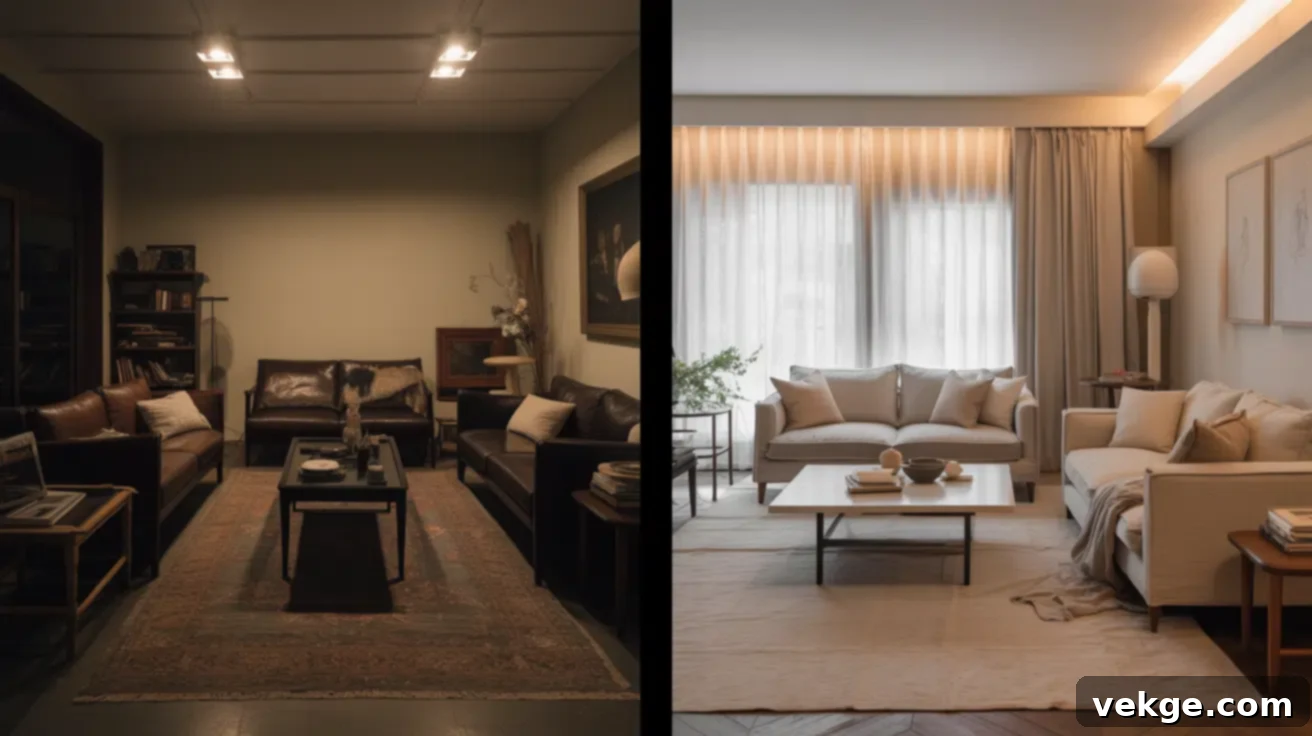Unlock Your Home’s Potential: The Ultimate Guide to Effective Home Staging for a Faster Sale and Higher Offers
Selling a home is a significant milestone, and in today’s competitive real estate market, making a powerful first impression is non-negotiable. Buyers often form an opinion about a property within moments of stepping through the door. This initial reaction can either make or break a potential deal, influencing not only whether they make an offer, but also how much they are willing to pay.
This is where the art and science of home staging come into play. Home staging is more than just decorating; it’s a strategic process designed to showcase your home in its absolute best light, allowing prospective buyers to envision themselves living there. It’s about creating an inviting, aspirational atmosphere that resonates emotionally and highlights your property’s best features, minimizing any potential drawbacks.
In this comprehensive guide, you will discover the transformative power of even minor updates, backed by clear, illustrative before-and-after home staging examples. We’ll take you on a detailed room-by-room journey, from the critical first impression of your front door to the cozy confines of your living room and bedrooms. You’ll learn practical, budget-friendly tips, understand the nuances of various staging approaches, and receive a clear, step-by-step staging plan to prepare your home for market. If you’re ready to make your property stand out, attract more serious buyers, and ultimately achieve a faster sale at a higher price, this guide provides all the fast, simple, and effective strategies you need.
Why Home Staging Makes a Crucial Difference in Selling Your Property
Home staging is the purposeful act of preparing and furnishing your house to appeal to the widest range of potential buyers. The core objective is not to hide flaws, but rather to allow buyers to easily visualize the property as their own future home. It’s about depersonalizing and decluttering to create a clean, welcoming, and move-in ready environment that sparks an emotional connection.
The impact of effective home staging is profound and directly affects your sale outcome. Here are the key benefits that illustrate why this investment of time and effort truly makes a difference:
- Achieve a Faster Sale: Staged homes consistently spend less time on the market. By creating a strong, positive first impression and helping buyers emotionally connect with the space, staged properties often generate more interest and receive offers more quickly than their unstaged counterparts. Buyers are less likely to hesitate when they can immediately see the value and potential.
- Secure Better Offers and Increase Property Value: A beautifully staged home often translates into higher offers. When a property looks stylish, well-maintained, and move-in ready, buyers perceive greater value. They are less likely to focus on minor imperfections or haggle over price because the overall impression of quality and care is so strong. Studies have shown that staged homes can sell for significantly more than unstaged homes.
- Forge an Emotional Connection: Real estate decisions are often driven by emotion. Staging adds warmth, charm, and a sense of “home” that raw, empty, or cluttered spaces lack. From the moment buyers walk in, a well-staged home can make them feel comfortable, welcomed, and eager to imagine their life unfolding within those walls. This emotional appeal is a powerful motivator in the buying process.
- Stand Out from the Competition: In a crowded market, staging helps your property shine. It elevates your home above similar listings, making it more memorable and desirable. This competitive edge is crucial for capturing buyer attention in online listings and during open houses.
- Enhance Online Appeal: The vast majority of home searches begin online. Professionally staged homes photograph much better, creating compelling listing photos that entice more buyers to schedule a showing. High-quality visuals are essential for drawing in potential interest.
These seemingly small efforts in staging can lead to remarkably significant rewards, potentially saving you time and earning you a higher return on your investment. If you’re ready to take the next step towards a successful sale, even a few simple, well-chosen changes can dramatically move you in the right direction.
Transformative Staging: Room-by-Room Before and After Examples
Witness the power of strategic staging with these practical, room-by-room examples. These updates demonstrate how minimal changes can transform everyday spaces into clean, inviting areas that not only capture buyer attention but also help your home sell more quickly and for a better price.
1. Living Room: Creating Space and Serenity
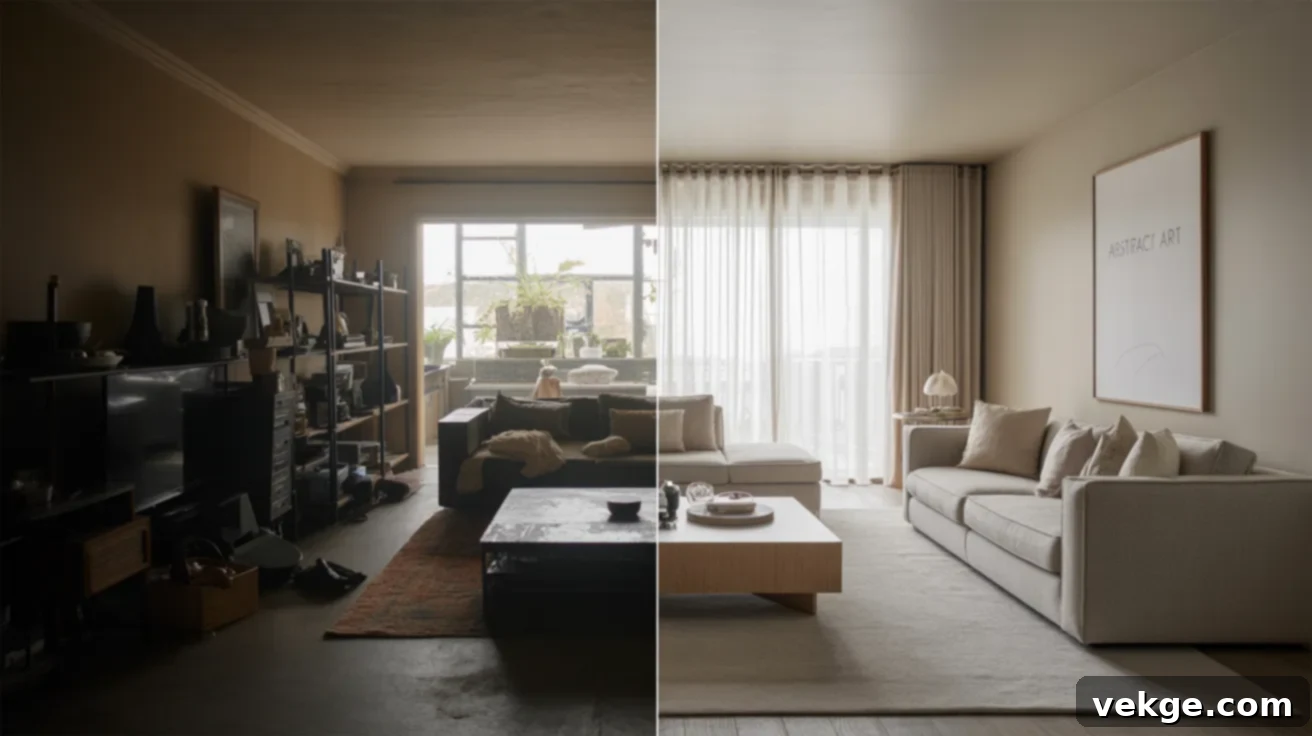
What Changed: The original space often featured oversized or bulky furniture and an abundance of personal items, making the room feel cramped and specific to the previous owner. For staging, all unnecessary and bulky furniture was removed. Personal photos, unique art pieces, and knick-knacks were carefully cleared away. The room was then re-furnished with appropriately scaled, neutral pieces. Soft, inviting lighting was introduced through lamps, and light-colored cushions and throws were strategically placed to add texture and comfort. Furniture was thoughtfully rearranged to create clear pathways, emphasize the room’s spaciousness, and define distinct functional areas.
Why It Works: A clean, open, and neutrally decorated living room is crucial for buyers. Removing personal items allows them to project their own lives and furniture into the space, rather than feeling like they are intruding on someone else’s home. Less clutter and well-arranged, scaled-down furniture make the room feel significantly larger and more airy. Soft lighting and simple, elegant touches contribute to a calm and welcoming atmosphere, creating a strong, positive impression of a comfortable and easy-to-enjoy living area. This allows buyers to visualize relaxing and entertaining here, making the home feel more desirable.
2. Kitchen & Dining Area: Sparkle, Space, and Functionality
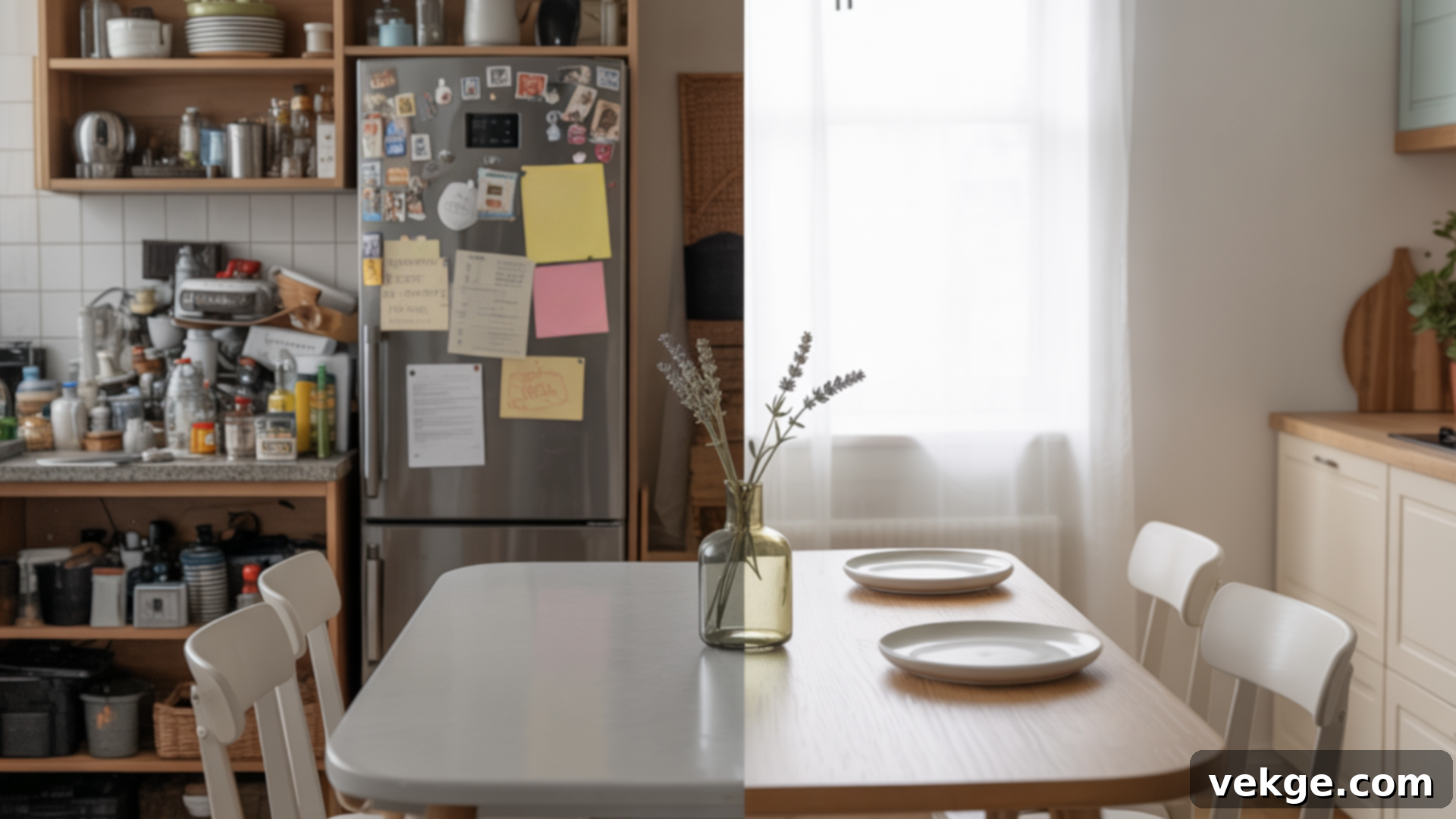
What Changed: Countertops, which were previously cluttered with small appliances, mail, and everyday items, were completely cleared. All small kitchen appliances not essential for a showing (like toasters, blenders, coffee makers) were stored away. The refrigerator surface was wiped clean of magnets, notes, and photos. To make the dining area inviting, a simple yet elegant table setting was arranged with clean plates, placemats, and a tasteful, non-obtrusive centerpiece like a bowl of fresh fruit or a small vase of flowers. Every surface was meticulously cleaned and polished.
Why It Works: The kitchen is often considered the heart of the home, and buyers prioritize cleanliness and functionality here. A decluttered kitchen instantly appears larger, better cared for, and more hygienic. When counters are clear, buyers can fully appreciate the available workspace and envision themselves cooking and entertaining. The subtle addition of a simple table setup helps define the dining area’s purpose, making it feel ready for immediate use without being overly personal. This encourages buyers to imagine preparing meals and enjoying gatherings in a clean, spacious, and inviting culinary space.
3. Bedrooms: Retreats of Calm and Comfort
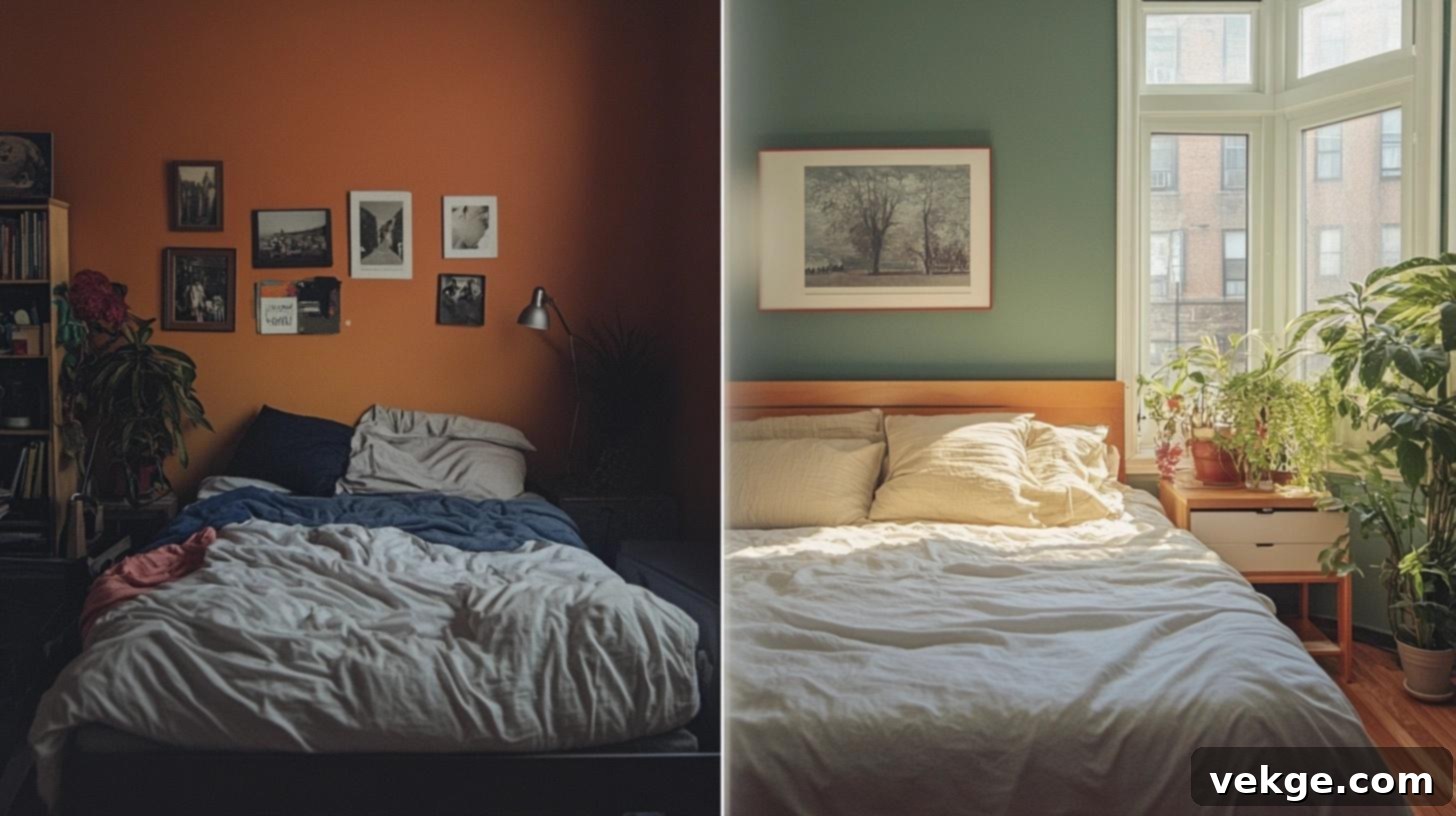
What Changed: Any bold, highly personal, or dated color schemes were replaced with soft, neutral tones for walls and bedding. All personal items, such as family photos, unique decor, and individual clothing, were removed. Beds were immaculately made with crisp, clean linens, and extra pillows were added to create a luxurious, hotel-like, and cozy aesthetic. Furthermore, closets were decluttered and half-emptied to visually maximize the available storage space, making them appear more spacious and functional.
Why It Works: Bedrooms should evoke a sense of calm, tranquility, and comfort. Neutral color palettes are universally appealing and help buyers easily envision their own personal style within the space. Removing personal items is vital for depersonalization, allowing potential buyers to mentally move in without feeling like a guest. A well-made bed with inviting pillows immediately conveys comfort and luxury. By emptying closets by at least 50%, you visually demonstrate ample storage, a key selling point for many buyers. This transformation helps create a serene retreat that buyers will find easy to picture as their own personal sanctuary.
4. Bathrooms: Pristine and Spa-Like Freshness
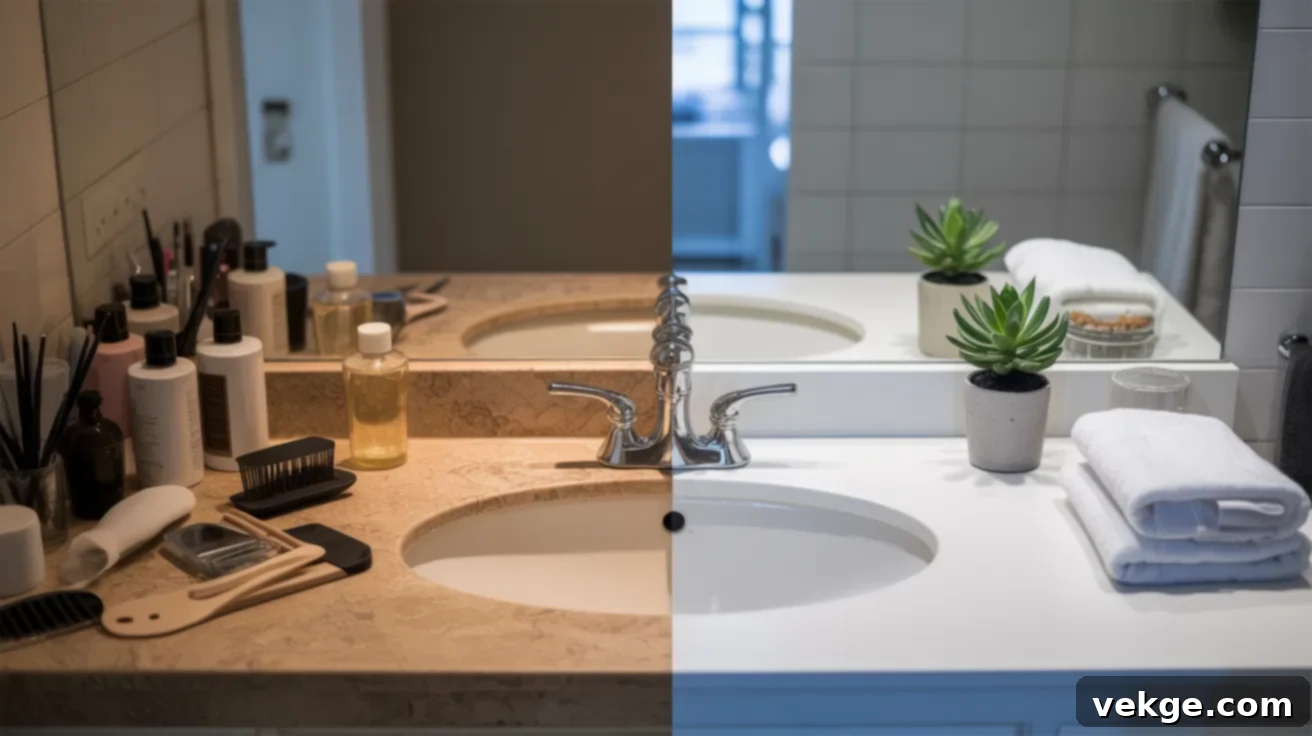
What Changed: All personal toiletries—bottles, brushes, toothbrushes, medicines, and any other excess items—were completely removed from sink counters, shower caddies, and shelves. Fresh, clean, fluffy towels were neatly folded and artfully arranged, often in white or neutral tones. A single, small, elegant plant or a subtle, unscented candle was added to enhance the spa-like atmosphere. All surfaces, including mirrors, faucets, and tiles, were thoroughly polished to a sparkling finish, and grout was cleaned.
Why It Works: Buyers expect bathrooms to be impeccably clean and fresh. Cluttered counters and personal items instantly make a space feel untidy and unsanitary. Removing these items instantly creates a sense of space and cleanliness. Neatly folded towels add a touch of luxury and care, while a single decorative item like a plant or candle provides a subtle accent without overwhelming the space. The sparkling surfaces convey meticulous maintenance, assuring buyers that the home is well cared for. This helps buyers envision a fresh, hygienic, and relaxing private space.
5. Exterior & Entryway: The All-Important Curb Appeal
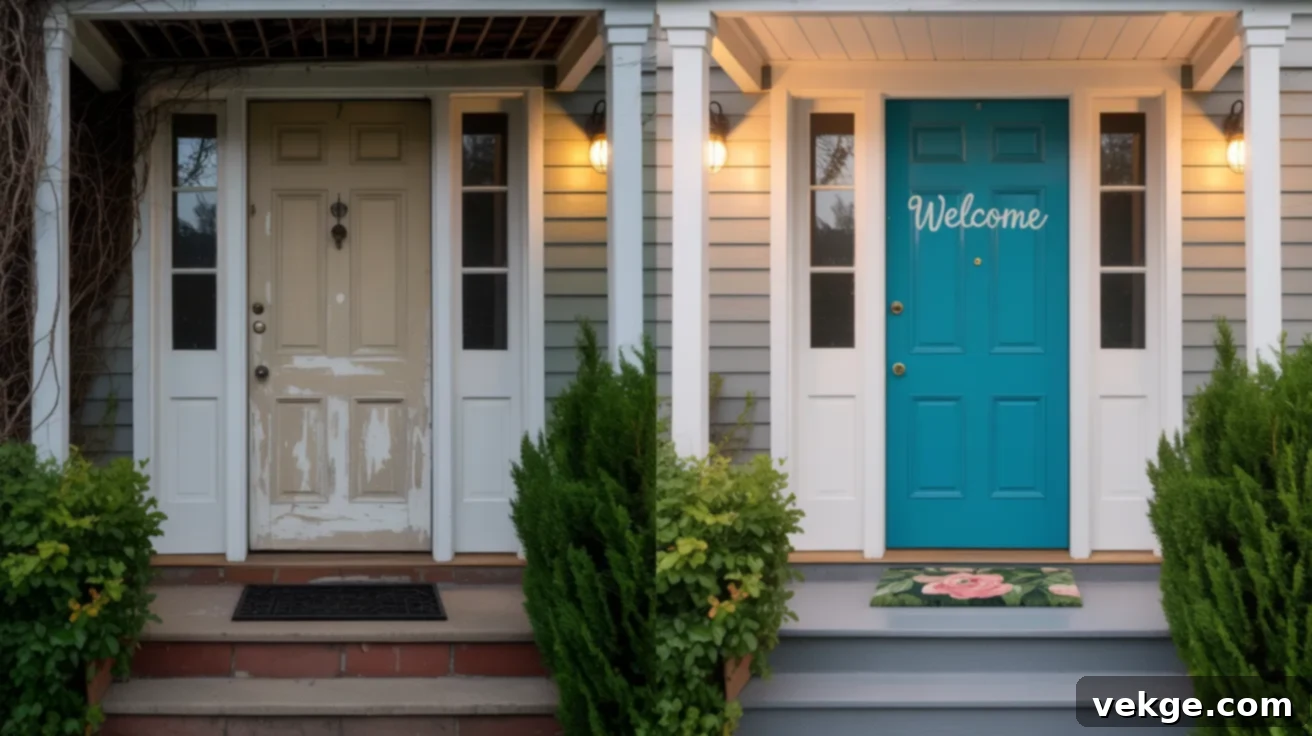
What Changed: The front door, often the focal point of the exterior, was repainted in a warm, welcoming color that complemented the home’s aesthetic. Overgrown shrubs, weeds, and unkempt garden beds were meticulously trimmed, pruned, and cleared. Fresh, vibrant plants or flowers were added in strategic locations near the steps or entrance to add color and life. A clean, inviting welcome mat was placed at the front door, and any exterior lighting fixtures were cleaned or updated to enhance evening appeal. The entire area, including pathways and steps, was thoroughly swept, pressure washed if needed, and tidied up to present a fresh, well-maintained look.
Why It Works: The exterior and entryway are the first elements potential buyers see, making curb appeal critically important. A clean, neat, and well-maintained front yard and entrance immediately communicate that the entire home is cared for, setting a positive tone before buyers even step inside. Small, impactful changes like fresh paint, manicured landscaping, and inviting accessories make a significant psychological difference, making buyers feel welcomed and eager to see more. This positive initial impression is vital for drawing buyers in and encouraging them to fall in love with the property from the very first glance.
Comparing Different Approaches to Home Staging: Finding Your Best Fit
Not all homes or budgets are the same, which is why various staging approaches exist. Understanding the differences can help you choose the most effective strategy for your property.
Vacant vs. Occupied Home Staging
- Vacant Home Staging: Vacant homes, while offering the advantage of appearing larger and being a blank canvas, can often feel cold, uninviting, and lack a sense of scale without furniture. Buyers may struggle to visualize how each room can be utilized or if their own furniture will fit. Staging a vacant home involves bringing in rental furniture, art, and accessories to define spaces, add warmth, and help buyers understand the flow and functionality of each room. This approach allows for complete control over the aesthetic and can create a consistent, aspirational look.
- Occupied Home Staging: Occupied homes, on the other hand, inherently possess a lived-in charm and a sense of coziness. However, they can also present challenges such as clutter, excessive personalization, or furniture that is too large or dated. The goal here is to declutter, depersonalize, rearrange existing furniture to optimize flow and space, and introduce subtle, neutral decor elements. This approach focuses on maximizing the potential of existing items while minimizing distractions, making the home feel inviting but universally appealing.
DIY Staging vs. Hiring a Professional Home Stager
- DIY Staging: This approach is ideal if you have a keen eye for design, ample time, a limited budget, and access to basic decor items. DIY staging involves cleaning, decluttering, depersonalizing, rearranging existing furniture, and perhaps purchasing a few low-cost accents like throw pillows, plants, or fresh towels. It requires you to objectively assess your home from a buyer’s perspective, which can be challenging for some. However, with good guidance and effort, it can yield impressive results without a significant financial outlay.
- Hiring a Professional Stager: Opting for a professional home stager is highly recommended if you are short on time, lack design expertise, have a luxury property, or if your home is vacant and requires complete furnishing. Professional stagers possess an expert understanding of current market trends, buyer psychology, and design principles. They can objectively assess your home, identify its strengths and weaknesses, and implement a strategic plan. They often have access to a curated inventory of furniture and decor, ensuring a cohesive and high-impact look that maximizes your home’s appeal and potential sale price. While an investment, the ROI often justifies the cost.
Low-Budget Staging Tips for Maximum Impact
Even with a tight budget, you can make a significant impact on your home’s appeal. The key is to focus on cleaning, decluttering, and strategic updates:
- Declutter and Deep Clean: This is the most effective and cheapest staging step. Remove all unnecessary items, clean every surface, and polish fixtures until they gleam.
- Rearrange Furniture: Optimize traffic flow and create inviting conversation areas using your existing furniture. Pull pieces away from walls to make rooms feel more spacious.
- Enhance Lighting: Open blinds and curtains to maximize natural light. Ensure all light fixtures have working bulbs of the same warm temperature. Add a few lamps to brighten dark corners.
- Add Greenery: Incorporate inexpensive faux or real plants (succulents, ferns) to bring life and freshness into rooms.
- Strategic Accessories: Purchase new, neutral throw pillows for your sofa, a fresh bath mat, or a simple, clean rug. Stores like IKEA, HomeGoods, Target, or even dollar stores offer stylish, low-cost decorative items.
- Fresh Paint (Strategic Areas): If your walls are dated or vibrant, paint a few key rooms (like the living room or entryway) with a light, neutral color. This is one of the highest ROI improvements.
- Mirror Magic: Strategically placed mirrors can make a room feel larger and brighter by reflecting light.
- Repair Minor Flaws: Fix dripping faucets, loose doorknobs, squeaky hinges, and patch small holes in walls. These small details signal a well-maintained home.
Your Pre-Listing Staging Timeline: How to Prepare for Success
Getting your home ready to sell can feel overwhelming, but a structured approach can make the process smooth and stress-free. Here’s a simple, step-by-step plan to guide your home staging efforts, starting 30 days before your ideal listing date.
1. 30 Days Before Listing: The Initial Assessment & Declutter Blitz
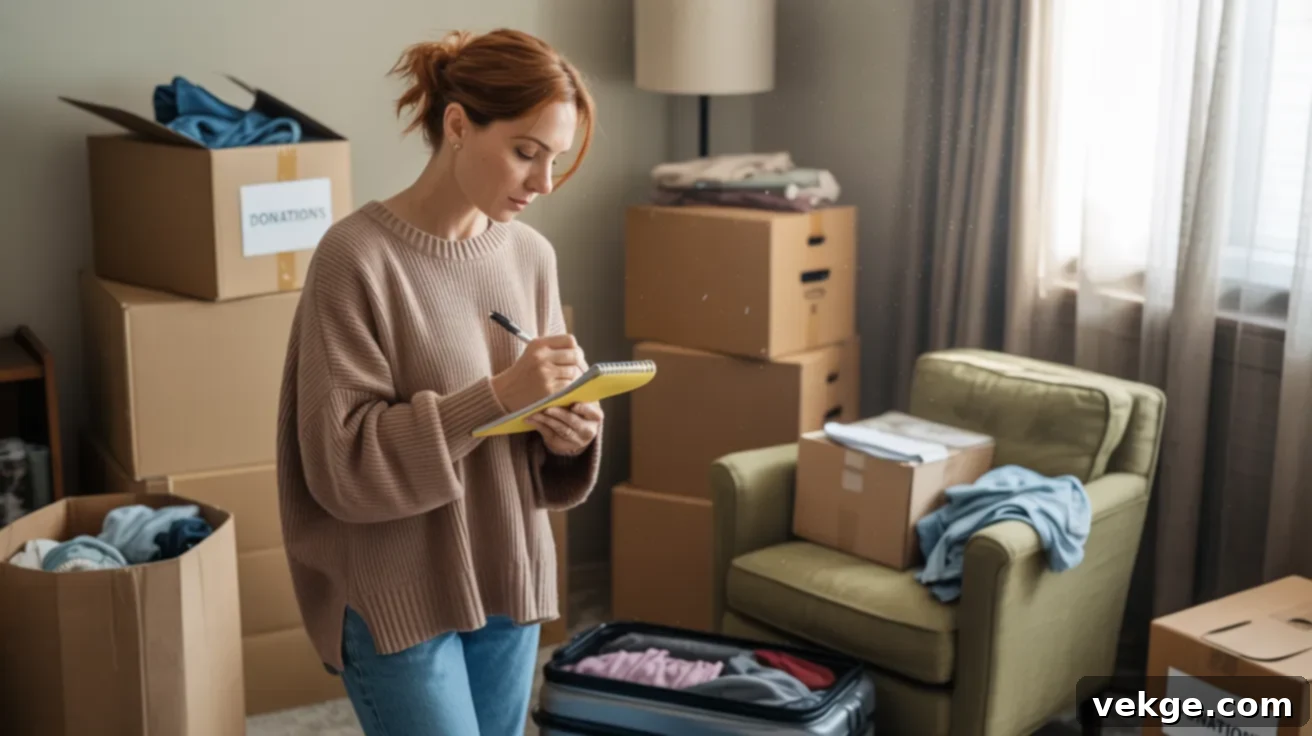
Begin by putting on your “buyer’s hat.” Walk through every room, the exterior, and even the garage, objectively assessing what might deter a potential buyer. Notice areas that feel overly cluttered, too personal, or simply worn out. Make a detailed list of all necessary minor repairs, from leaky faucets to scuffed baseboards. This is also the ideal time to start the crucial decluttering process. Begin packing away items you won’t need for the next few months, donate what you no longer want, sell valuable unused items, and discard anything broken or unusable. The less stuff you have, the easier and more effective your staging will be.
2. 21 Days Before Listing: Deep Cleaning & Minor Repairs
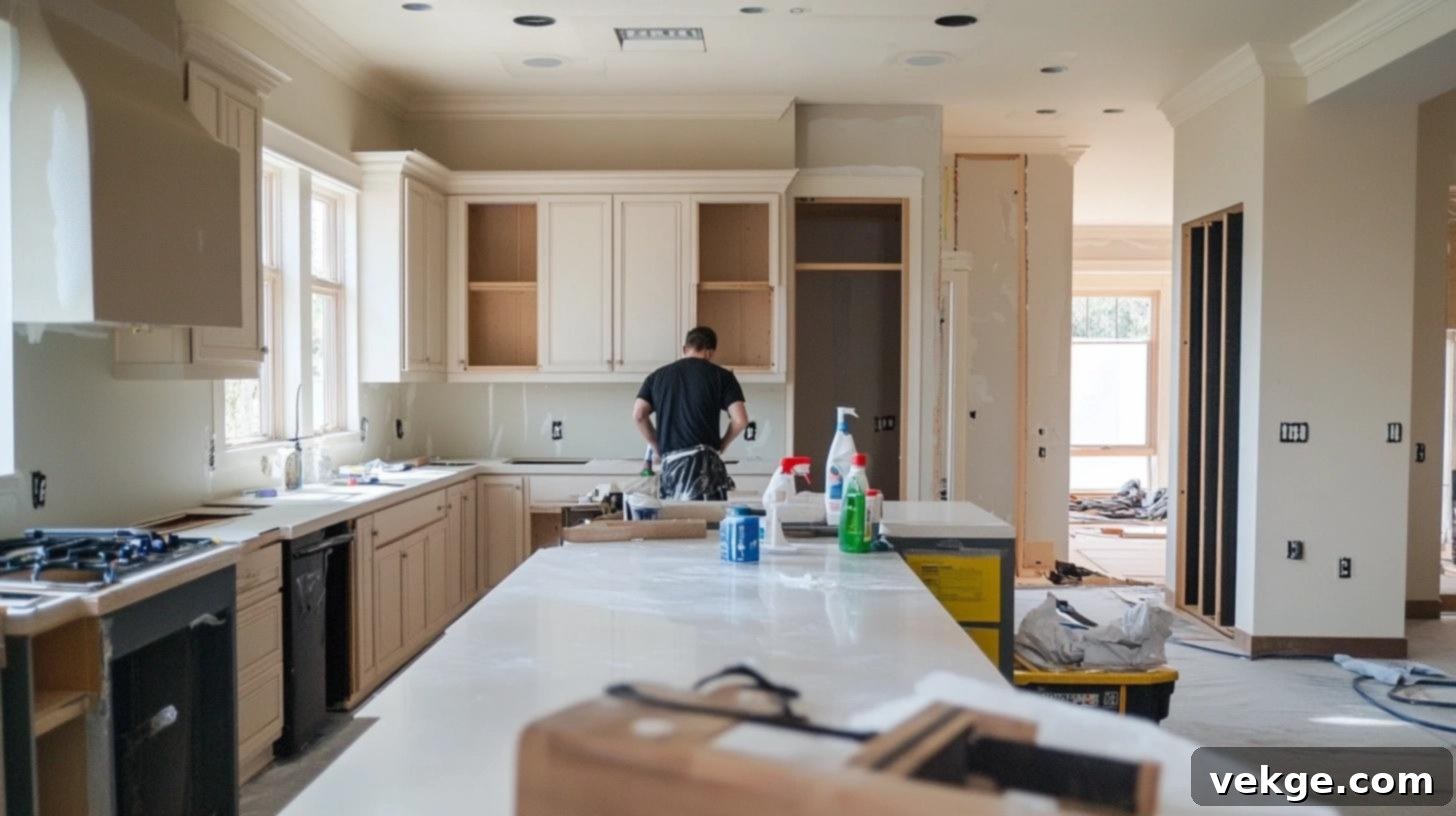
With decluttering underway, it’s time for a thorough deep clean. Scrub every surface from top to bottom, including baseboards, windows (inside and out), grout lines, and light fixtures. Consider professional carpet cleaning or floor waxing. Address all the small repairs identified in week one: fix loose doorknobs, repair leaky faucets, patch any holes in walls, and tighten squeaky hinges. If walls are painted in dark, bold, or chipped colors, now is the time to freshen them up with light, neutral tones like off-white, soft gray, or beige. These shades have a powerful effect, making rooms appear larger, brighter, and cleaner.
3. 14 Days Before Listing: Depersonalize & Optimize Furniture

This week focuses on depersonalization and space optimization. Carefully remove all personal photos, family heirlooms, awards, certificates, and highly specific art pieces. Pack up any extra furniture that makes rooms feel crowded or impedes natural flow. The goal is to create an anonymous yet inviting space where buyers can project their own lives. Ensure all windows are spotless inside and out, maximizing natural light. Begin to introduce simple, neutral staging items like fresh, clean rugs, tasteful throw pillows, and easy-care faux plants to add comfort and texture without creating new clutter.
4. 7 Days Before Listing: The Finishing Touches & Room Definition
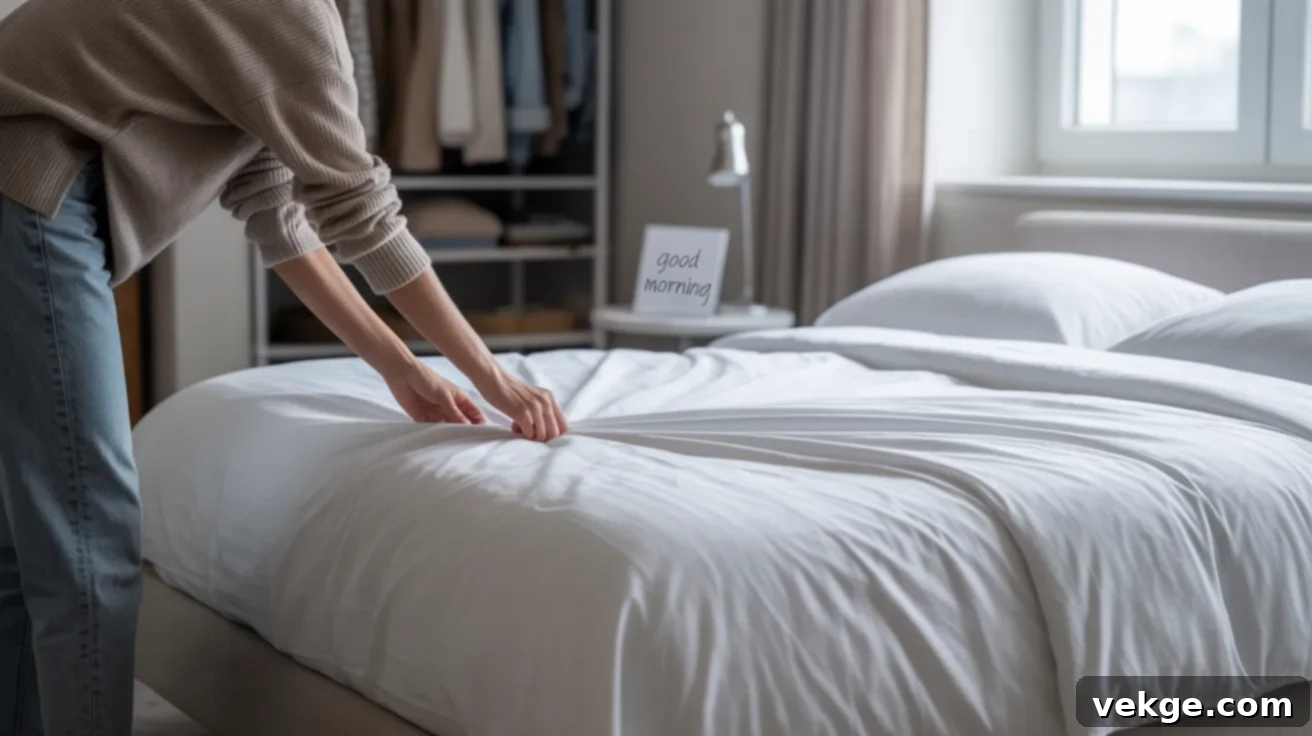
In the final week, refine each room to clearly define its purpose and maximize its appeal. Make sure bedrooms look like serene, cozy retreats with neatly made beds, fresh linens, and soft lighting from bedside lamps. Ensure home offices appear functional and organized. In bathrooms, place fresh, neatly folded towels and a simple, subtle decorative element like a small plant or a high-quality hand soap. Organize closets, cabinets, and pantries, removing at least half of the contents to showcase ample storage space, which is a major selling point. Ensure all light fixtures have uniform, warm-toned bulbs.
5. 1 Day Before Listing: The Final Polish & Sensory Appeal
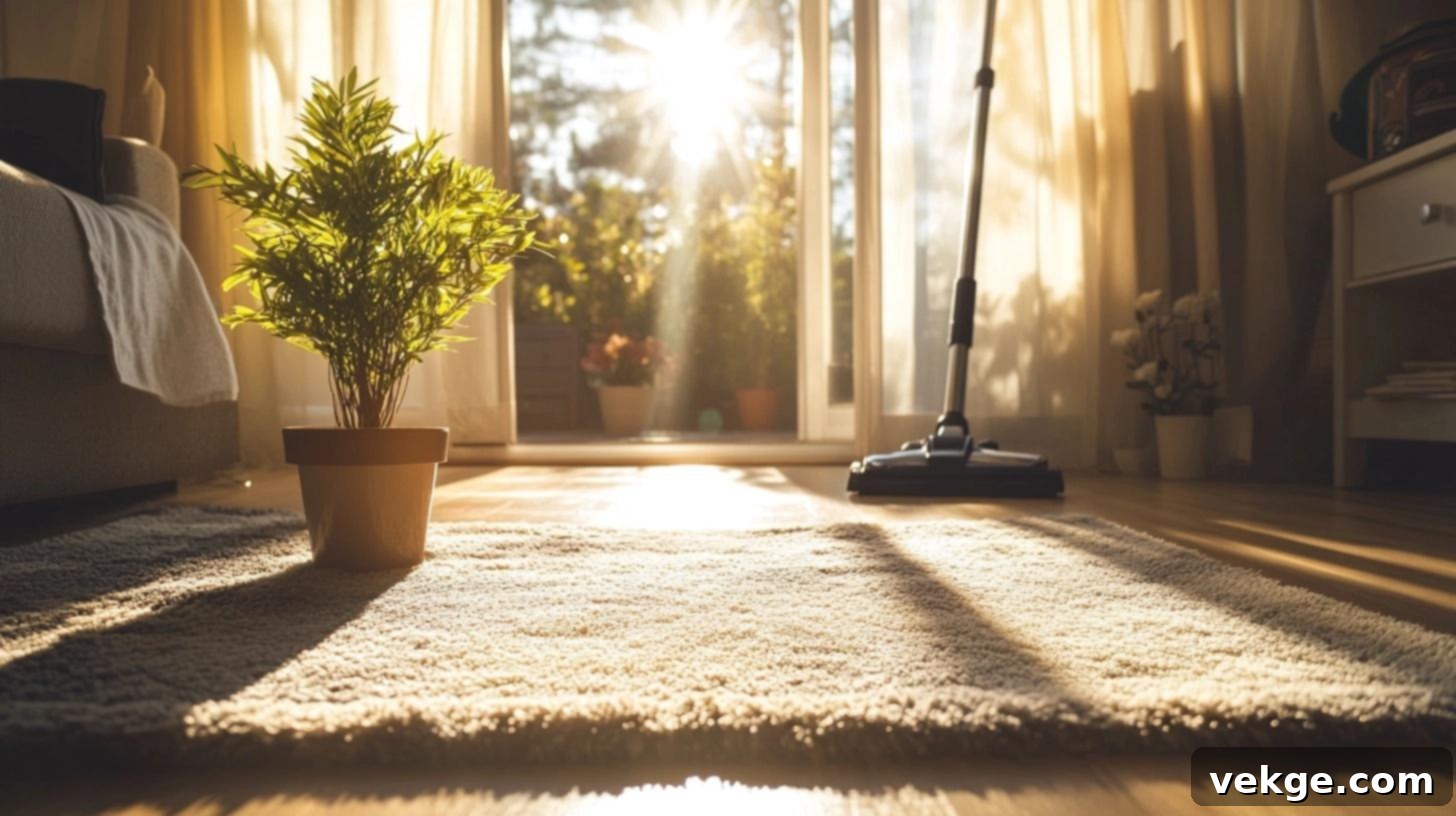
On the day before the listing goes live, or just before showings begin, give your home one final, meticulous cleaning. Sweep, vacuum, wipe down all surfaces, empty trash bins, and ensure everything sparkles. Critically, open all blinds, curtains, and drapes to flood the home with natural light and make rooms feel larger and more welcoming. Turn on lights in any naturally darker corners or rooms to ensure every space is well-illuminated. Consider placing a small, fresh floral arrangement or a very subtle air freshener (avoiding overpowering scents) near the entryway to greet visitors with a clean, inviting aroma. Ensure the thermostat is set to a comfortable temperature, and if appropriate, play very soft, calming background music during open houses.
Common Home Staging Mistakes to Avoid
While the goal is to make your home shine, certain missteps can undermine your staging efforts. Being aware of these common mistakes can save you time, money, and potential buyer disinterest:
- Over-Personalizing: This is perhaps the most common mistake. Leaving family photos, unique collections, or highly specific decor can prevent buyers from imagining their own lives in the home. Depersonalize to create a blank canvas.
- Neglecting Repairs: Small repairs like leaky faucets, chipped paint, or loose door handles might seem minor, but they signal to buyers that the home may have larger, hidden issues. Fix everything, no matter how small.
- Ignoring Curb Appeal: The exterior is the first thing buyers see. An unkempt lawn, dying plants, or a dirty front door can deter buyers before they even step inside. Invest in landscaping, power washing, and a fresh coat of paint for the front door.
- Poor Lighting: Dark or dimly lit rooms feel smaller and less inviting. Ensure all light fixtures have working bulbs of the same color temperature (preferably warm white). Open blinds and curtains for natural light.
- Overpowering Scents: While a pleasant aroma is good, strong air fresheners, pet odors, or cooking smells can be a major turn-off. Focus on natural freshness through deep cleaning and ventilation, rather than masking odors.
- Leaving Clutter in Closets and Storage: Buyers will open closets! If they’re overflowing, it suggests a lack of storage, even if the home has ample space. Half-empty closets to showcase their capacity.
- Inconsistent Style: If you’re staging, try to maintain a cohesive, neutral style throughout the house. A jarring mix of decor styles can be distracting and confusing to buyers.
- Not Defining Room Purpose: Ensure every room clearly communicates its intended function. A spare room filled with random items can confuse buyers; stage it as an office, guest room, or hobby space.
By avoiding these pitfalls and focusing on clear, clean, and appealing aesthetics, your staging efforts will be far more effective in attracting the right buyers.
Wrapping Up Your Home Staging Journey for a Successful Sale
You’ve now seen firsthand how simple yet strategic changes can profoundly shift the perception and feel of each room in your home. From optimizing lighting and layout to transforming an empty space into an inviting sanctuary, the principles of home staging are incredibly powerful. It’s essential to remember that staging isn’t about striving for unattainable perfection; it’s about strategically presenting your property to appeal to the widest possible audience, helping potential buyers emotionally connect and feel at home the moment they walk through the door.
This comprehensive guide has walked you through every critical space, offering real-world examples, actionable steps, and honest tips that you can implement right away. Whether you are actively preparing to sell your home now or simply contemplating future real estate moves, these insights will empower you to think like a buyer and act with purpose, ultimately enhancing your property’s market appeal and value.
Now is the perfect opportunity to take a fresh, objective look at your own home through the eyes of a discerning buyer. Identify areas where small changes can yield big results and start your staging journey today. Need more in-depth assistance with prepping specific areas of your space? Be sure to explore my other blogs for more detailed room-by-room tips, printable checklists, and a wealth of simple yet impactful before-and-after ideas to guide you every step of the way.
